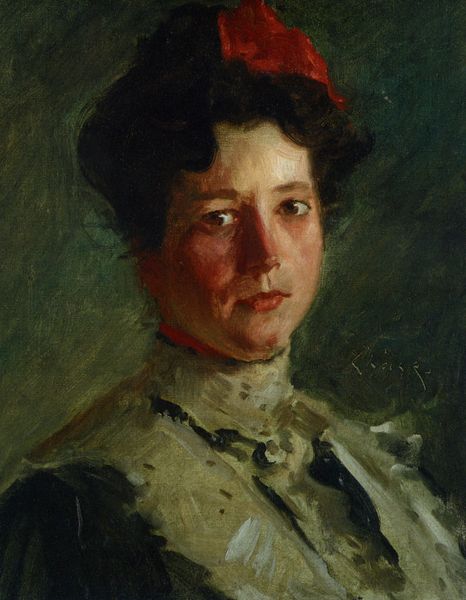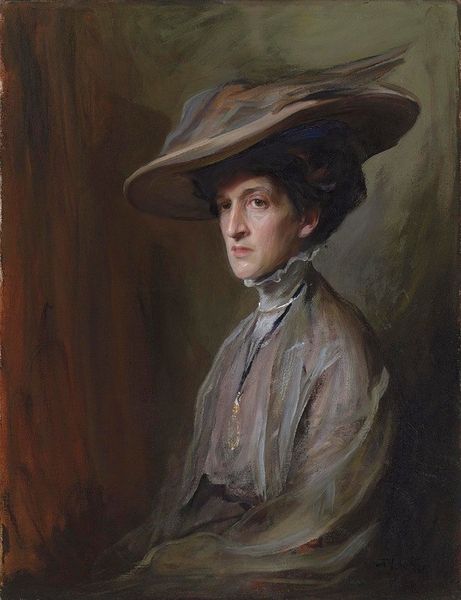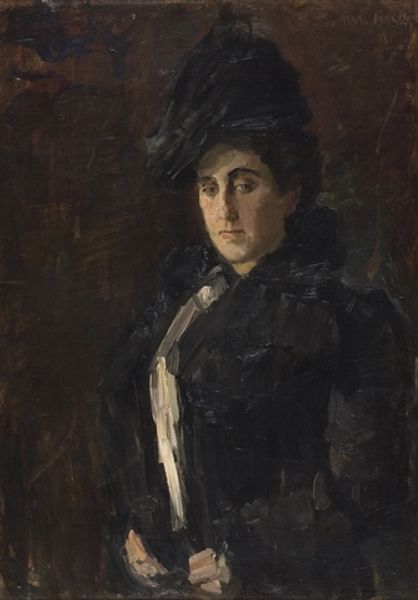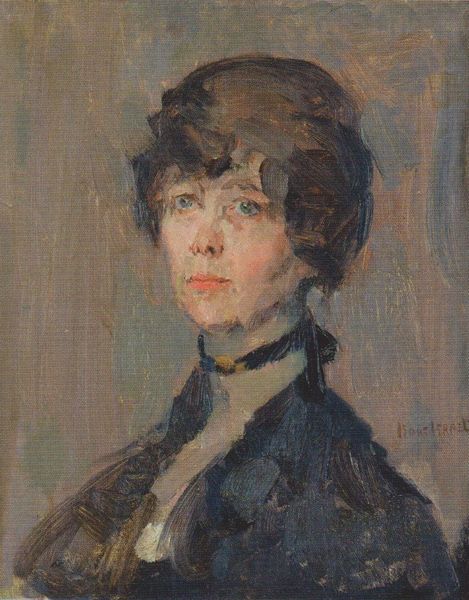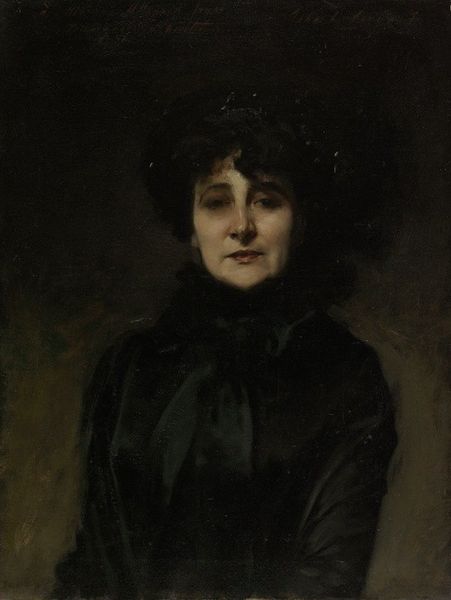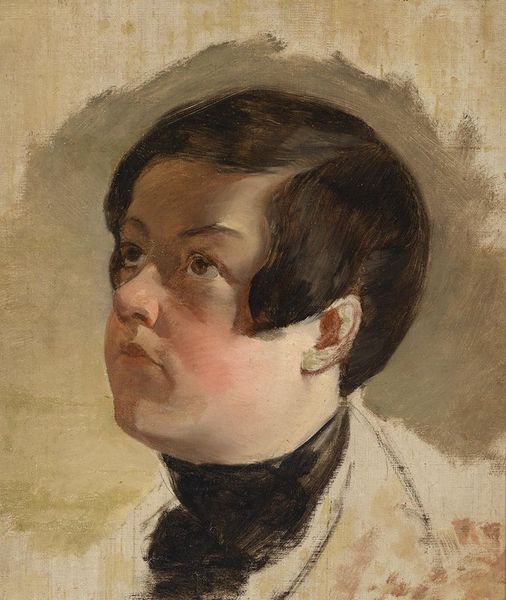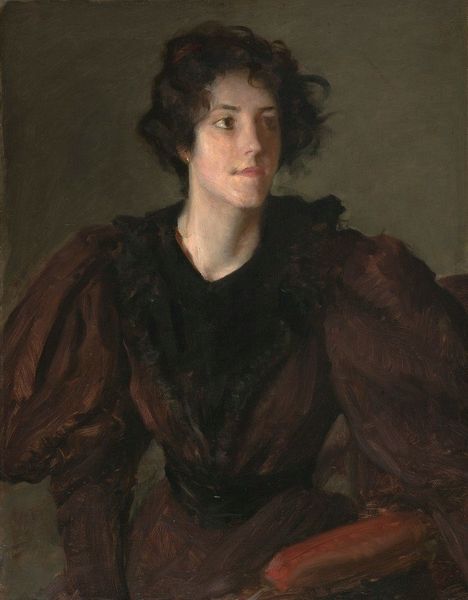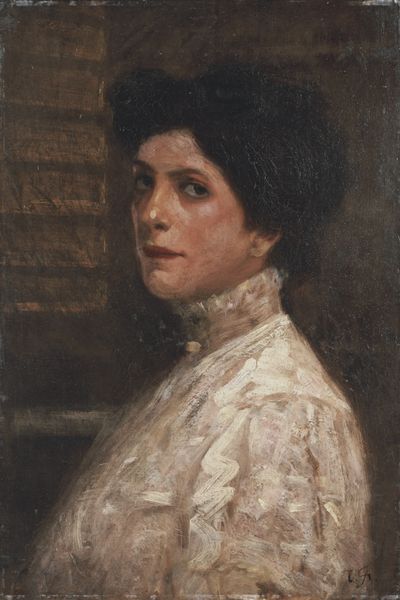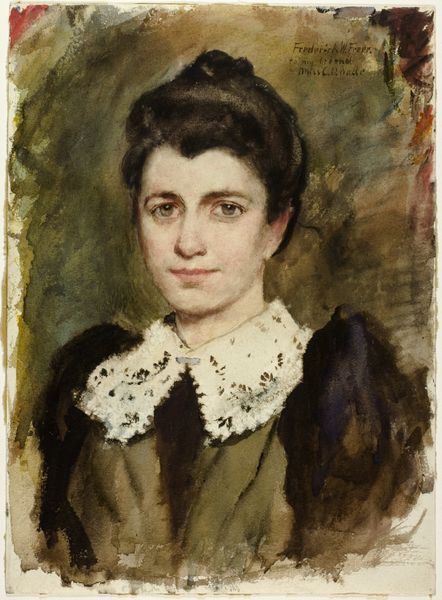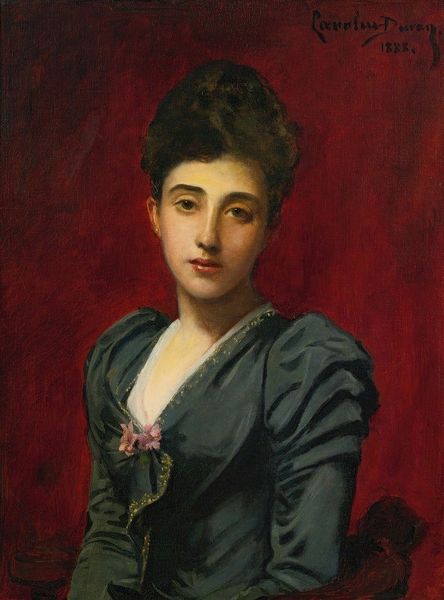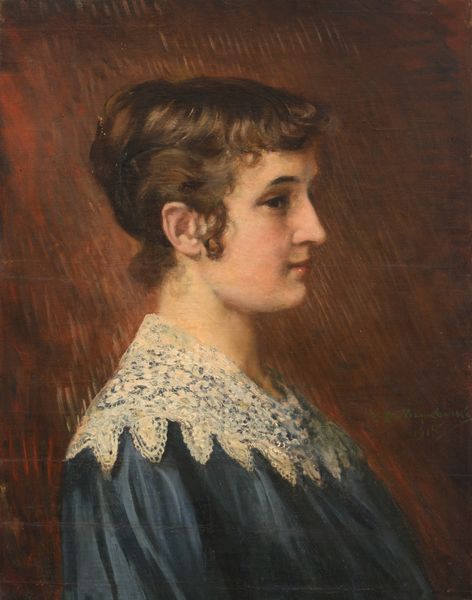
Copyright: Public Domain: Artvee
Editor: Here we have "Agnes," an oil on canvas portrait painted in 1903 by Alice Pike Barney. The first thing I notice is the way the muted colors give it this really serene, almost melancholic quality. What are your thoughts on its composition? Curator: The composition presents a structured simplicity. The subject, Agnes, is centrally positioned, fostering an immediate engagement with the viewer. Consider the relationship between the background, a wash of green and brown, and Agnes. Do you see how the chromatic scale, from the background to the subject’s skin tone, creates a harmonious balance? Editor: I do see that. So the lack of sharp contrasts really emphasizes the subject's gaze and posture rather than distracting with other details. But is that also limiting? Does it affect the emotive range the piece is able to communicate? Curator: An excellent point. Semiotically, the subdued palette signifies restraint and introspection. The somewhat limited range underscores a sense of composed dignity. The materiality of the oil paint lends itself to a soft, almost velvety texture, especially in the skin tones. Does this softness suggest to you a particular emotional state or perhaps an idealization of the subject? Editor: That's interesting. The texture does bring a sense of vulnerability to the figure. So by softening the textures, Barney actually created a sense of the interior world of Agnes? Curator: Precisely. Barney orchestrates these visual elements—color, texture, composition—to direct us towards an engagement with Agnes’s innerity, and to an encounter with turn-of-the-century portraiture itself. Editor: I see that now. It's less about what Agnes looks like and more about how Barney uses paint to create feeling. Curator: Precisely, paying close attention to the relationship between material and affect offers a rich interpretive experience. Editor: Okay, that really shifted my understanding. It's less about surface representation and more about the subtle interplay of color and form. Curator: Indeed, a formalism encourages the viewer to engage deeply with how a painting constitutes its effects through skillful formal maneuvers.
Comments
No comments
Be the first to comment and join the conversation on the ultimate creative platform.
